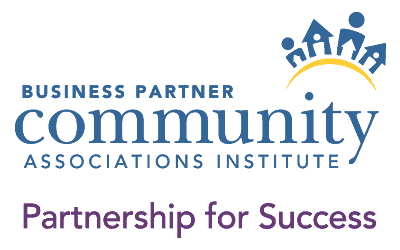Transforming HOA Meetings with Organized Agendas
Board meetings can sometimes be a cause of stress for HOA members. It might be that your meetings seem disorderly, too much time is allocated to minor issues, or it just feels like nothing gets accomplished, resulting in lost time. If these scenarios sound familiar, it might be time to revisit your HOA board meeting agenda. Recognizing this problem underscores the necessity of well-structured HOA board meeting agendas. These agendas act as a guide, directing discussions, prioritizing tasks, and fostering transparency within the community. In this piece, we’ll explore the significance of well-structured agendas, emphasizing their role in accelerating decision-making, empowering board members, and ultimately elevating the satisfaction level within the HOA.
Why is an agenda important for HOA board meetings?
Having a framework to follow when preparing for your board meetings is beneficial. In fact, it has the potential to alleviate many of the issues you are experiencing with board meetings, such as spending too much time on a particular topic or discussions that go out of hand. Let’s explore how an organized agenda can benefit your meetings.
1. Preparation
One of the main reasons why HOA board members should always have an organized agenda is to make preparation easier. With a well-structured agenda, board members can research important information they need during the meeting and developing their viewpoints ahead of time. This preparation allows members to contribute meaningfully to the conversations, ask well-informed questions, and provide practical solutions. Furthermore, thorough preparation develops a feeling of ownership and accountability among board members, who arrive at the meeting ready to fully participate.
2. Focus and Direction
According to studies, 39% of time in meetings are spent on items that are not on the agenda, leading to wasted time. An agenda acts as a compass, giving focus and direction to HOA board meetings. Agendas helps to keep meetings on track by specifying topics you need to discuss and establishing a timeline. Furthermore, the agenda allows board members to keep control of the meeting by gently bringing topics back on course if they deviate.
3. Efficiency
By providing a planned framework for discussion, the agenda ensures that meeting time is spent wisely and productively. Predetermined time restrictions for each agenda item keep conversations focused and on track, avoiding tangents and unnecessary delays. Board members can prioritize items based on their significance and relation to the HOA’s goals, allowing for more effective use of time and resources.
4. Transparency
An agenda promotes transparency by distributing it to all members, including homeowners before the meeting. Everyone is aware of the issues that you need to discuss, eliminating surprises and allowing for proper preparation or attendance if preferred.
5. Accountability
Finally, the agenda promotes accountability among HOA members. The agenda establishes responsibility by clearly detailing the issues that need to be discussed and the decisions that need to be made. Furthermore, the agenda is a written record of discussions and decisions, keeping everyone accountable for their actions.
What makes a solid board meeting agenda?
It’s useful to have a defined framework to refer to while restructuring and updating your regular board meeting agenda. In reality, it can efficiently solve many issues raised at board meetings. Aside from the basic data, such as the meeting time, date, and place, several essential items must be included in your HOA board meeting agenda.
These components include the following:
1. An Outline of the Agenda
Begin by identifying the critical topics for discussion at the meeting. Ensure that these themes align with your community board’s goals and responsibilities. Next, rank these agenda items based on importance, allocating appropriate time blocks for each item to promote thorough consideration.
2. Communicate Expectations to Staff
Effectively communicate the meeting’s objectives and expected outcomes to all members. This clarity promotes a focused mentality and ensures that members understand the importance of their contribution. Furthermore, it encourages members to participate.
3. Distribute the Agenda in Advance
Once the agenda has been created, it must be provided to all board members and residents before the meeting. This gives them time to review the issues, acquire necessary data, and prepare any presentations or reports required.
4. Set Clear Expectations
Define the expected level of involvement among staff members during the meeting. Inform them whether they will be expected to offer updates, engage in conversations, or give presentations on certain topics.
5. Follow Up After the Meeting
Finally, plan to follow up with the community after the board meeting. After the meeting, work with your community managers and other board members to create a list of the meeting action items, decisions made, and who is responsible for taking the next step on each task. Provide comments on individual contributions and acknowledge staff members’ efforts to prepare for and actively participate in the meeting.
How to Communicate about Follow-up Tasks from the Board Meeting
Effective communication is the foundation of good governance. Following a successful board meeting, clear and effective communication on follow-up duties is critical. This communication not only enforces responsibility but also promotes community cohesiveness and growth. Below are some of the ways to communicate about follow-up from the board meeting:
1. Document Action Items
Assign a specific person to organize action items and decisions during the meeting to improve communication. Create a detailed list of action items, including precise tasks, timeframes, and responsible parties.
2. Send Out Meeting Minutes
Next, you can send out meeting minutes to members. Meeting minutes should be distributed as soon as possible following a board meeting to provide accountability within a HOA. To promote successful communication, minutes should be precise, short, and well-organized, emphasizing major issues, resolutions, and responsibilities.
3. Clarify Responsibilities
Clarifying roles is critical to ensuring proper follow-up after a board meeting. Begin by describing each individual’s allocated duties, including their responsibilities, expected outputs, and timeframes. Provide thorough instructions and resources as needed to assist in job completion. Communicate any dependencies or partnerships necessary to complete the job effectively.
4. Set Reminders
Setting reminders is essential for keeping everyone on track with follow-up duties following a board meeting. Use digital tools like calendars, task management applications, and email reminders to notify team members of forthcoming deadlines and work statuses. Customize reminders depending on their urgency and significance to guarantee that tasks are completed on time. This proactive strategy helps reduce missed deadlines while promoting team accountability and productivity.
5. Document Progress
Documenting progress on follow-up activities after a board meeting is critical for monitoring accomplishments and detecting possible issues. Maintain a centralized system or document that allows team members to update their task statuses routinely. Include information such as task completion, problems faced, and resolutions.
6. Review and Follow Up
After allocating responsibilities following the board meeting, organize frequent reviews to identify progress and handle any challenges that may arise. Hold follow-up meetings or check-ins to review task statuses, challenges, and necessary revisions. In addition, open discussion and criticism should be encouraged throughout these reviews to foster teamwork and successfully resolve any issues. Regular follow-up and progress reviews keep activities on track and promote a feeling of accountability and collaboration within the community.
How to Leverage a Task Management System for Board Meeting Action Items
Effectively handling action items that are created from a board meeting is essential to community operations. Using a task management system enables you to track action items and keep everyone informed of outcomes.
1. Centralized Task Management
One of the greatest benefits of having this system is the centralized task management. Task management software organizes and tracks all action items and tasks in one place. This removes the need for many spreadsheets or email threads, simplifying the follow-up process. With Pilera’s task management tool, you can streamline all your work into one accessible location. This includes any comments, files, and email replies connected to your tasks. To ensure a smooth board meeting, you can set up a custom category just for board meeting agenda items and then apply this filter on your dashboard for easy viewing. This will provide you with a comprehensive list of all tasks you wish to address during the board meeting.
2. Accountability
Task management software allows you to assign specific tasks to people or teams while clearly defining responsibility and ownership. This ensures that each action item has a designated responsible person who is held accountable for its completion. With Pilera’s task management feature, you can assign tasks to other fellow board members or to your community managers. When they are assigned a task, they will receive an email notification automatically keeping them informed.
3. Setting Deadlines and Prioritization
Pilera’s task management system lets you set deadlines for each work and rank them according to their urgency or relevance. This capability guarantees that the follow-up process runs smoothly and that crucial action items are addressed immediately. Setting deadlines and prioritizing activities inside the program creates an organized workflow that maximizes productivity and prevents critical tasks from falling.
4. Collaboration and Communication
If you’re planning to communicate or collaborate via online, a task management system is a perfect solution. The system includes collaboration and communication capabilities, including commenting, file sharing, and real-time updates. By centralizing communication, you can minimize miscommunication, speed up workflows, and promote a more coherent and coordinated approach to follow-up actions. Furthermore, real-time updates guarantee that you are always informed of the most recent developments and adjust work accordingly. Through Pilera, board members and managers can communicate directly on the task itself. The comments section enables board members and managers to share updates and notify each other through email.
5. Visibility and Transparency
Transparency and visibility is vital in community management. Task management software provides visibility into each task status, allowing board members and managers to track progress, identify bottlenecks, and guarantee follow-up activities completion. This openness encourages accountability within the team since everyone can see who is in charge of each work and follow its progress from start to finish. With comprehensive insight into task statuses, you can interact more efficiently, make informed decisions, and remain on track with project timeframes and objectives. Pilera’s task management system tracks every action taken on a task, including status updates, file attachment updates (when files were added and removed), comments, and email replies on a ticket.
Watch Video: Tasks, ACRs & Violations Management
Transforming HOA Meetings with Organized Agendas
An organized agenda is the cornerstone of efficiency, transparency, and effectiveness within homeowner associations. Think of it as the guiding light for productive discussions and informed decisions, pinpointing issues and setting priorities. It not only encourages planning and accountability among board members but also streamlines meetings, boosts community participation, nurtures trust, and ensures alignment with the HOA’s mission and values.
About Pilera
Pilera Software is the premier community and property management software that has helped thousands of community managers enhance communications, operations, client support, engagement, and voting. Book a personalized demo to learn how Pilera can help improve efficiency and reduce costs.


